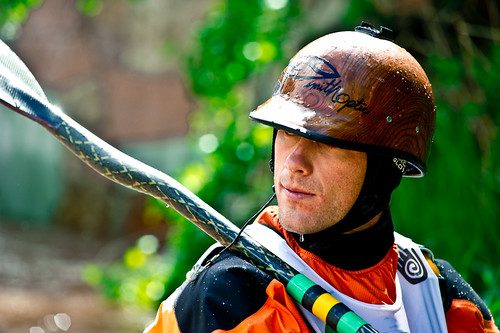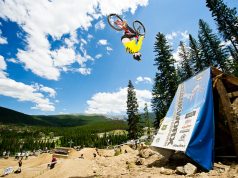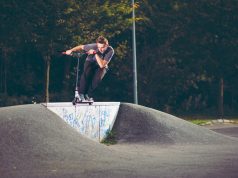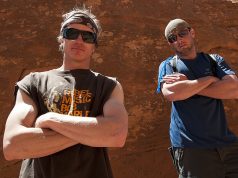Aperture is one of the three most important settings that you need to know and have in the back of your mind when shooting action. The three most important are Aperture Settings, Shutter Speed, and ISO.
The aperture is determined by setting how open your lens is. When the lens is wider open, more light spills into the camera as you take a picture. Wide open aperture settings are the smallest f number your lens can be set to. Standard lenses can usually open up to f/2.8. This is very wide open. Wide open apertures cause only a small slice of the image to be in focus. The amount of the image that is in focus from front to back is called “depth of field”. When you shoot wide open with f/2.8, you’re creating a very narrow slice where the subjects eye’s might be the only thing in focus. Maybe the front of their skateboard, or tips of their skies are blurred at this setting. This creates a very professional look.
Closing the aperture
When you “stop down aperture” or “close the aperture” you are letting less light in at a given time. This basically means that the camera will “take it’s time gathering the information” and record a very sharp and detailed image. A fully stopped down lens is a higher number, say f/22. With this setting, you will need to raise your ISO and likely lower shutter speed to gather enough light for a properly exposed image. Most action sports need to be shot at a wide-open aperture for this reason. (unless blur is the look you’re going for..)!
While learning to shoot action, try using slightly stopped down aperture settings. Something like f/5.6 to help capture consistently sharp images.
Try shooting in Aperture-Priority mode on your camera to experiment with different apertures and see how they affect your images. Watch what happens to the shutter speed as you open up or close down your aperture to get a feel for what you can do. Once you’ve got a hang of this, along with, shutter speed, and ISO, you can begin shooting full manual for complete control.
Next Guide Article: Nailing Focus









[…] select a constant Aperture value and your camera sets the shutter speed for proper exposure. (Read more about Aperture here.) Use this mode when you like to maintain depth of field(how much of the image is in focus) or you […]
[…] the three most important settings that all photographer's need to learn. The others are Aperture and Shutter Speed. Next Guide Article: Shutter Speed and Action ExplainedTags: action […]
[…] exposure. Once you're confident in your understanding of shutter speed, head on over to this article on Aperture, and this article on ISO. Next Guide Article: Aperture and Action […]